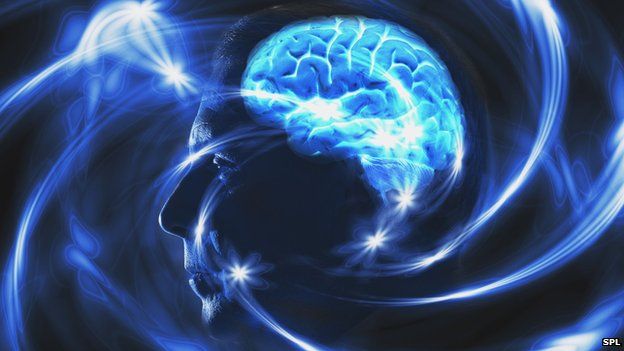Brain stimulation 'helps in stroke'
- Published

Stimulating the part of the brain which controls movement may improve recovery after a stroke, research suggests.
Studies showed firing beams of light into the brains of mice led to the animals moving further and faster than those without the therapy.
The research, published in Proceedings of the National Academy of Science, could help explain how the brain recovers and lead to new treatments.
The Stroke Association said the findings were interesting.
Strokes can affect memory, movement and the ability to communicate.
Brain cells die when their supply of oxygen and sugars is cut off by a blood clot.
Stroke care is focused on rapid treatment to minimise the damage, but some recovery is possible in the following months as the brain rewires itself.
Stimulation
The team at Stanford University School of Medicine investigated whether brain stimulation aided recovery in animal experiments.
They used a technique called optogenetics to stimulate just the neurons in the motor cortex - the part of the brain responsible for voluntary movements - following a stroke.
After seven days of stimulation, mice were able to walk further down a rotating rod than mice which had not had brain stimulation. After 10 days they were also moving faster.
The researchers believe the stimulation is affecting how the wiring of the brain changes after a stroke.
They detected higher levels of chemicals linked to the formation of new connections between brain cells.
Lead researcher Prof Gary Steinberg said it was a struggle to give people drugs to protect brain cells in time as the "time window is very short".
However he told the BBC that aiding recovery could be easier: "The advantage of treating during the recovery period is it's longer, potentially it could be years, so it has huge potential.
"I predict that the kind of study we're doing will help to push stimulation as a therapy for stroke and you can image how import that would be for the millions of stroke patients with disability."
Light
Optogenetics uses an optic fibre to send light into the brain, which specifically activates cells that are genetically engineered to respond to the light.
It allows precision stimulation of parts of the brain in experiments.
The team at Stanford argue using optogenetics will allow them to uncover exactly what changes in the brain as it recovers from stroke,
Prof Steinberg said: "We're also looking to see if optogenetically stimulating other brain regions after a stroke might be equally or more effective.
"The goal is to identify the precise circuits that would be most amenable to interventions in the human brain, post-stroke, so that we can take this approach into clinical trials."
However, optogenetics cannot be used in people yet.
It would require genetic modification of the target cells, but Prof Steinberg argues "it may not be too far in the future that you're doing refined and elegant stimulation" with optogenetics.
Dr Shamim Quadir, from the Stroke Association charity, said: "This is a very interesting study using light to stimulate specific brain cells of genetically altered mice in the early days after a stroke.
"Using this optogenetic technique could be helpful in improving our understanding of the mechanisms driving stroke recovery, however it is too early to tell exactly how this research might be developed for the treatment of human stroke patients."
- Published26 January 2011
- Published20 September 2011
- Published24 May 2007